Malta is the most densely populated island in Europe. A tiny spec in the Mediterranean Sea, with more than 300,000 people living on its shores.
Not the obvious choice for someone looking for a quiet camping trip in Europe. Or a traveler looking to get away from it all.
However, this unique island, along with its smaller sister islands of Gozo and Comino, offers some of the most interesting camping spots anywhere in the world.
Almost all of them are in the rural North of the country, away from the bustle of the cities.
Here you will find a rare mix of ancient human history, deserted beaches and rugged terrain to camp on.
There’s also a long-established culture of rock climbing and scuba diving that means you can come to experience these great activities in some of the most picturesque settings anywhere in the world.
Excited by Camping in the rural North of Malta? You should be.
But what are the first three questions you need to ask before putting on your rucksack and hitting the road?
Table of Contents
3 Questions You Need To Focus On
1. Where’s Best to Stay When I Arrive?
Malta has a number of brilliant hostels that are much cheaper than the hotels.
Hostel Malti in St Julian’s is a great place to start.
The staff here are really helpful and chances are you’ll meet like-minded people in the common room.
Hostels are especially good for lone travelers because they give you the chance to meet up with others straight away.
From Hostel Malti in the south, you can grab a bus ride north to the city of Mosta in less than an hour.
The problem with hotels in Malta is that they are often full of tourists looking to enjoy the nightlife of Paceville.
So, if you’re looking for a chilled-out camping trip, the hotels might feel like a bit of a party atmosphere.
There are more and more Airbnb offerings on the Maltese Islands which could be a good option.
I’ve always been a fan of booking a nice place to stay at the end of any adventure holiday.
Giving yourself that little reward after a challenging and exciting trip into the great outdoors.
2. How Will the Weather Effect a Camping Holiday in Malta?
Weather questions are valid but so hard to answer.
Malta is such a small island that the weather seems to pass it by really quickly.
The clouds fly past.
You’re never stuck with the same thing for long, apart from the summer months when the earth rarely sees anything but the sun.
In the winter, temperatures seldom fall below 10 degrees Celsius, although it does rain.
The rains come in short and sharp bursts that can flood a campsite in less than an hour.
The beginning of autumn is the best time to visit.
At this time the temperatures are gently lowering from 30 degrees and the sea breeze hasn’t lifted up too much.
3. What is Travel like on the Islands?
The public transport is ok. There’s been a lot of complaining about the bus services on Malta, although new highways and more road development have helped improve that.
The thing is, Malta is small enough that you can have a great camping visit without having a vehicle.
Public transport is definitely an option if you’re traveling pretty light.
You can plan a route along the coast of the rural north without ever using a car or van.
In fact, when you’re on hiking routes a car may even hold you back.
Then you have to think about parking for long periods which just adds unneeded stress.
Parking is definitely much worse in the summer than during the off-season (October – May).
Getting between the islands isn’t hard, especially if you’re in the north near the main ferry port to Goza and Comino.
Both trips take less than 30 minutes to make, and both islands can be explored in a few days.
My advice would be to have a clear plan of the areas you want to see before you go.
And then take as long as you want to tick them off.
With this strategy in mind, I’ve made a list of 5 things to plan your trip around in the rural North of Malta.
5 Things To Plan Your Trip Around In The Rural North of Malta
1. The Blue Lagoon, Comino
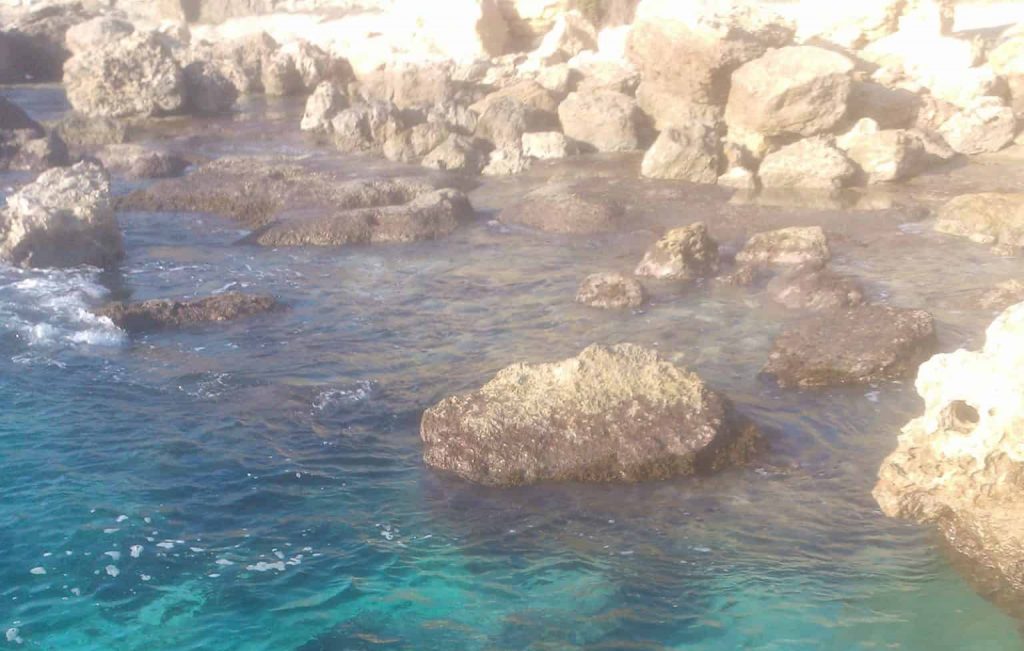
The iconic name is matched by the exotic pool of opalescent water you find at the Blue Lagoon.
It’s a natural swimming pool dotted with craggy rocks that rise up out of the clear blue water.
The Blue Lagoon is a great place to stop after a good days’ walking around Comino Island.
You can hike for hours and explore some of the terrific coastlines and then reward yourself with this beautiful spot.
You may remember we spoke about rewarding yourself on long hikes (Internal Link – 20-mile hikes).
Well, it’s hard to think of a better reward than sitting and watching the sunset colorfully into the Blue Lagoon.
My Experience:
When I visited the Blue Lagoon it was in late November.
It was almost empty apart from the odd tourist boat coming in. It felt like our very own private lagoon.
However, I am told the summer is the exact opposite, with hundreds of people filling up the sandy beaches and floating in the warm sea.
One way to get over this would be to make your trip to Comino Island with a tent and camping equipment.
The great thing about camping is you usually start your day before everyone else.
Something about the great outdoors, the sound and feel of nature, gets us out of bed a bit earlier.
Arriving at the Blue Lagoon super early, after packing up the tent in the summer morning, is something I would love to do.
Or, of course, visit out of season as I did.
2. Ta’ Marija Cave
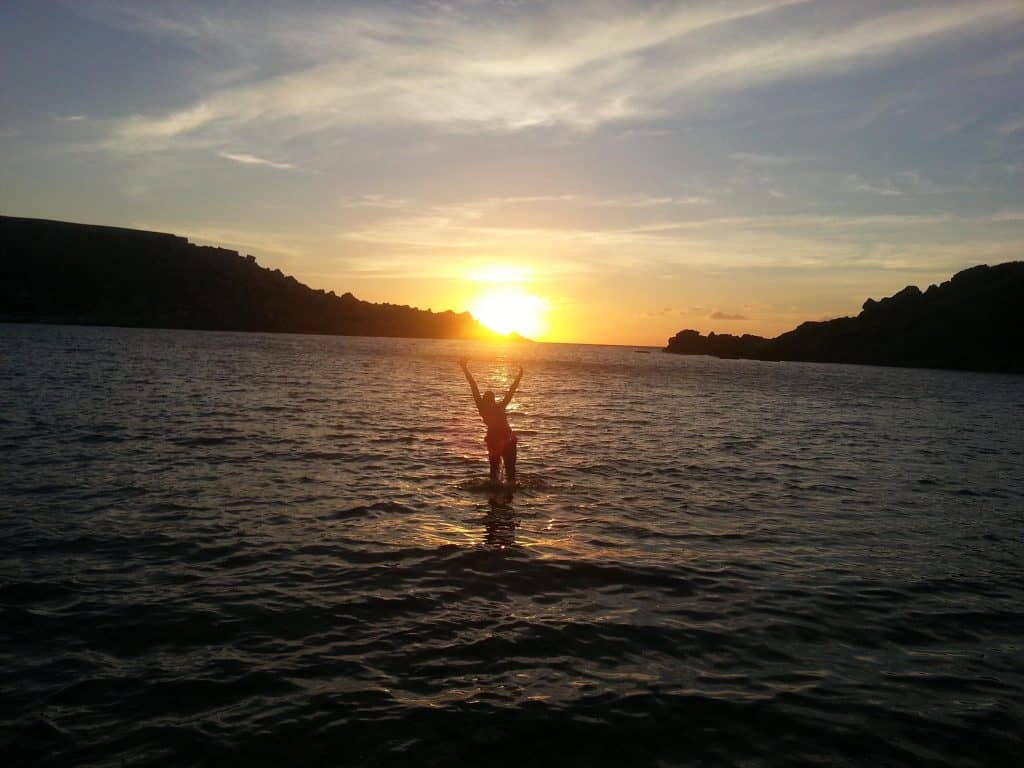
All of the great places to visit in Malta seem to be surrounded by great areas of natural beauty to hike through.
The two caves at Ta’Marija are no different.
Interestingly, to actually reach the caves you’re better advised to travel by water, entering them on a small boat, kayak or canoe from Gnejna Bay.
The main advantage of going by sea is you can actually float yourself into the caves and explore further.
If you’re determined to walk, though, I’ve done it myself and can offer a few tips/directions.
My Experience:
You can walk to the caves if you take the cliff path on the left of Gnejna Bay.
The path takes you along windy and open land where you just have to follow the line of the shore.
Yes, this is a path less trodden.
It’s a good challenge though and takes less than an hour.
The key is to keep walking until you pass the head of the bay. Essentially getting round the bend of the land.
There it will open up until you come to the two caves.
The light colors of the layered rock are like nothing I’ve seen anywhere else.
If you’re feeling brace you can get into the water and swim into the caves.
My advice would be to take a buoyancy aid if you’re going to do this.
3. Mgarr to Gnejna
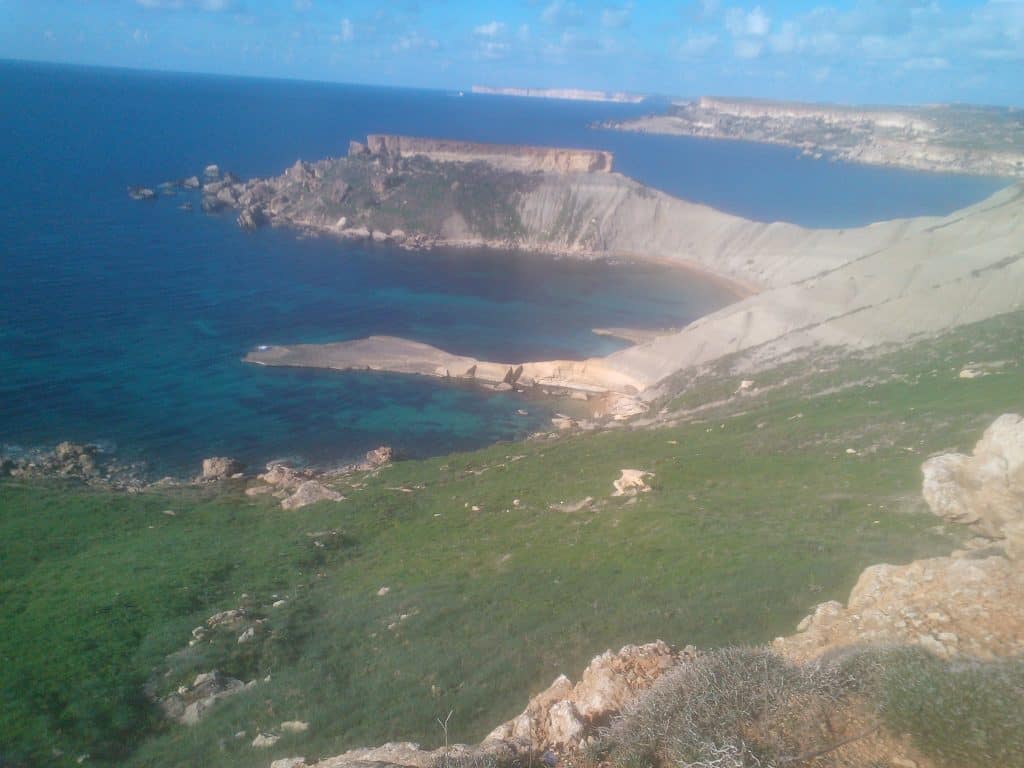
This is a hike that anyone exploring the rural north of Malta would be crazy to miss.
You start in Mgarr, where a domed church dominates the town square.
A short trip from the much more famous Mosta Dome.
From Mgarr you head for Gnejna (easy to follow on road signs) until the roads turn to dusty paths and the ragged cliffs come into the site.
And this is where the hike really comes to life.
You start to catch glimpses of the turquoise sea, while the path winds along the coastline.
The jagged outline of the island as it falls into the sea can be seen for miles at some points, like you’re looking at a detailed map of the area.
My experience:
This hike was the first time I ever saw the strange and mysterious cart ruts of Malta.
They are deep cuts in the solid rock that look like ancient tracks left by carts.
What doesn’t make sense, though, is how any cart would have been able to cut so deep into hard rock.
I’ve read lots about these strange indents on the earth and still have never found a satisfactory explanation.
You really have to see them to believe them, and make up your own opinion.
4. Wied il-Mielah
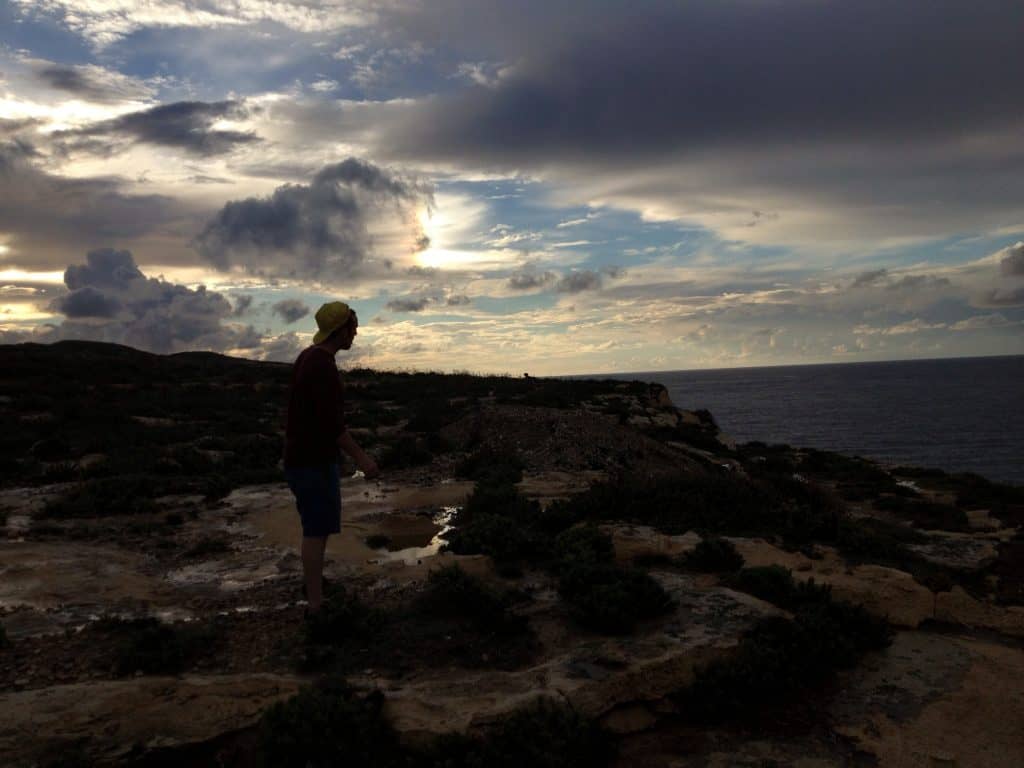
The Azure Window was always the most famous sea arch of the Maltese Islands.
Unfortunately, this natural wonder collapsed into the sea during a ferocious storm in 2017.
Less well known is the Wied il-Mielah arch. Maybe this is because it’s more bulky and square than its light-fingered cousin.
It actually looks almost man-made. As if some giant had come along with a chisel and built it in the night.
My Experience:
A truly brilliant spot for camping. You can grab the ferry to Gozo from Malta and then catch a bus to the village of Gharb.
From there you have a hike along the coastline to find the arch.
I love it here because it’s not touristy at all. This is not a spot where people can just visit quickly for a picture and then go.
You have to make an effort.
Subsequently, the area is rarely busy and there are loads of great spots to pitch up a tent and look out to sea.
On a clear day, you can see the hills of Sicily, Italy in the distance. (70km).
5. Blue Hole, located on the west coast of Gozo
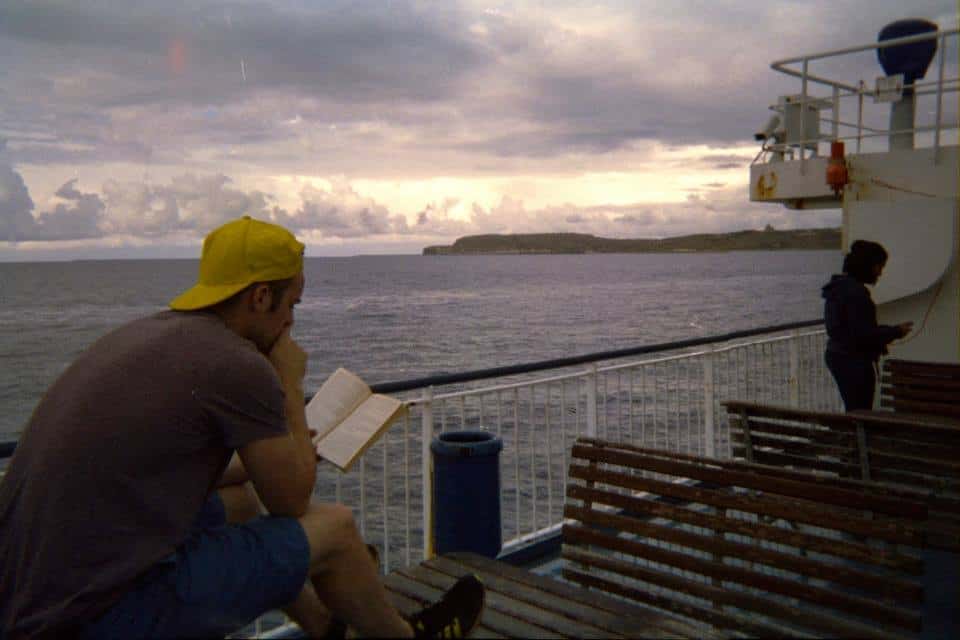
Scuba and climbing are probably the most popular adventure sports in Malta.
On flat land the Maltese love football, but out at the Blue Hole in Gozo, it’s all about scuba diving.
This is a 10m inland sea pool where schools of parrotfish swim alongside octopus and eels.
The best thing about the Blue Hole is that anyone can visit.
Experienced divers swim right through into the open ocean and discover the coral garden beyond.
Learners are invited to stay inside the Blue Hole and explore the cave in shallower waters.
My Experience:
Swimming up through the coral reef is exhilarating.
I found it a bit scary as this was only the third time I had been scuba diving.
There’s something about the big blue and the unknown that still scares me.
Once you get over your worries the amount of life on the coral is mind-blowing.
Like a mini-city living right off the coast of Malta.
Back on land, there is one more thing that rural northern Malta taught me.
The essential things to know when hiking in hot countries.
What I Have Learned From A 30km Hike across Gozo
I set off from Wied il-Mielah in Gozo and walked for seven hours until I reached the town of Mgarr in Malta.
That included a ferry trip between the two islands.
On the way I saw bright white catholic churches, crawling lizards and every type of cactus you can imagine.
Here are a few things I learned about walking in a hot country.
-
Walking Barefoot can be Ok (Better than bad trainers anyway)
I didn’t realize just how bad my new shoes were going to make my feet feel, so I was looking for anything to stop the pain after the first mile or so.
First I tried to stuff cloth into my shoes to soften the rubbing back against my heel.
It didn’t work, probably because of the sweat causing it to slip.
After a while, I gave up and just took my shoes and socks off.
The ground was flat enough that it didn’t hurt my feet.
Also, the dust on the tracks in Gozo means they don’t heat up from the sun quite so much as the newer, tarmac roads in Malta.
Keep your eyes out for sharp stones, expect a few to get you, and walking barefoot can be a nice break from sweaty, uncomfortable shoes.
-
It’s Easy to Forget to Drink
Having a big bottle of water doesn’t mean you’ll drink it.
For some reason, I hadn’t drunk anything after two hours of walking in 25-degree weather.
In a way, I was just enjoying the sun and not thinking about hydration.
The problem came when I suddenly starting drinking a lot, which then meant I had to stop for a toilet break every 10 minutes.
When you’re on a long walk it’s so annoying when you can’t get into a rhythm and have to stop all the time.
Obviously there’s the much more important fact of avoiding heat stroke or dehydration as well.
Drink a little, often.
-
Bring a hat
Not much explanation needed here.
When you start hitting the hard miles everything helps your physical and mental health.
Not least a hat to keep that burning sunshine off your head. I kept it cool with a damp handkerchief.
Hand towels are much better for this but, of course, I didn’t have one.
The handkerchief did a pretty good job.
-
Be prepared for no shade
There is a stretch of road across Gozo where there is nothing on either side of you apart from a low, stone wall for miles.
Above you, the sun keeps on beating down.
For a while, I used my bag as some makeshift shade, but the energy of resting it on my head didn’t seem worthwhile.
After about 30 minutes I started wondering when I’d get a rest from the sun.
Without shade, you can’t stop for a rest because your temperature will just feel like it’s going up.
You have to keep moving.
I wasn’t prepared for this and it made these miles horrific.
Checking your hike on Google satellite is a really good idea. The shade shouldn’t be underestimated.
Over to You
The rural north of Malta has an incredible amount to offer for someone looking for an adventurous trip.
You can explore the challenging hiking routes on foot and swim into the blue underworld that lies beneath.
You can even climb on some of the best climbing routes in Europe.
Then, once your body wants a rest, you can look out over the Blue lagoon and ponder just how those incredible cart ruts came to be.

Leave a Reply